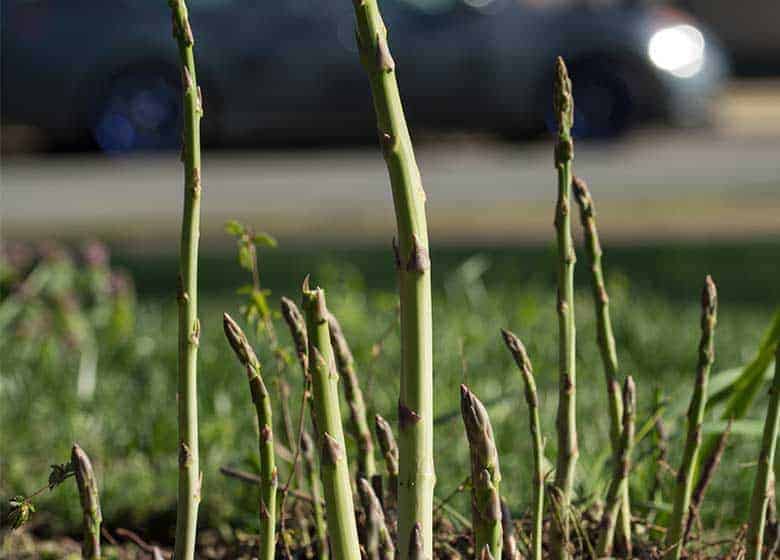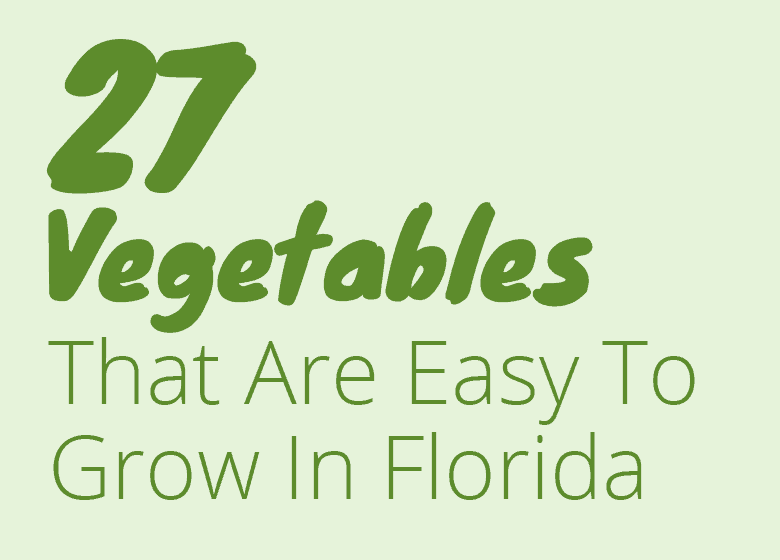Is it too hot to grow asparagus in Florida? Most gardeners might think that.
Asparagus is difficult to grow in south and central Florida. It’s best adapted to zones 3-8, so those in North Florida will have the most luck. Plant in the early springtime. Asparagus is a perennial plant that can live and produce for many years.
Asparagus needs to go through dormancy in order to grow stalks that are large like in the grocery stores. In order to go into dormancy, the plant needs a period of either drought or cold. North Florida gardeners will have an easier time growing asparagus than central and south Florida gardeners.
Planting Asparagus
Asparagus is best suited for the climates of USDA zones 3-8. Florida is made up of zones 8-11. Those in north Florida will have the easiest time growing asparagus.
It’s best to plant in the early springtime for north and central Florida. If you are brave enough to try growing asparagus in south Florida you should plant during what everybody else thinks of as “winter”.
- North Florida: March
- Central Florida: February
- South Florida: January
Most asparagus plants are grown from “crowns”. These are dormant roots of plants that are at least 1 year old. There are some asparagus varieties that you can grow from seed. But if planting from seed your time to harvest is significantly longer.
One plant can grow to be 1.5 feet wide and 4 feet tall. When planting asparagus make sure to choose a location where it will not shade out other plants.
Florida Friendly Asparagus Varieties
Asparagus thrives in temperatures that are around 75°F. We don’t have a whole lot of days that average that temperature, especially in south Florida.
Also, asparagus needs a certain dormancy period or cold weather and drought in order to produce hearty stalks.
To combat these two issues we need varieties of asparagus that are heat tolerant and fast to mature.
- Apollo
- Atlas
- UC-157
These are all heat-tolerant varieties of asparagus that I think Florida gardeners will have the most luck with. UC-157(Check price) is a heat-tolerant variety that is also resistant to many common diseases you will see in asparagus.

Growing Asparagus
Asparagus needs a well-draining soil that is rich with compost and other organic matter. If you are planning on planting straight into the ground you need to, at the very least, add compost and a thick layer of mulch.
If planting into a raised bed or if you are building your own soil, I’ve always had pretty good luck with a mix that looks something like this:
- 40% Coco coir (Check price on Amazon)
- 40% Compost (You can get it on Amazon but I’ve found it way cheaper at local stores)
- 20% perlite (Check price on Amazon)
- Worm castings (Check price on Amazon)
- Mykos (Check price on Amazon)
The mykos and worm castings are a nice one-two combo to help your plants give your plants extra nutrients but they aren’t 100% necessary.
The spot that you plant your asparagus also needs to receive at least 6 hours of sun.
While asparagus is actively growing you should water regularly. Making sure the soil stays moist but not too wet or not too dry. During the coldest months of the year, asparagus will go into dormancy and you should cut back on the watering at that point.
Fertilizing Asparagus
According to the extension office of new york state asparagus does not need a whole lot of fertilizer.
In fact, over-fertilizing can harm spear growth. They have shown that even with large harvests of asparagus that the plant does not deplete the soil of a ton of nutrients.
I wouldn’t worry too much about fertilizing asparagus.
However, if you are planting directly into your soil I think that you should get your soil tested at your closest local extension office.
They will be able to tell you exactly what your soil looks like as far as nutrients.
Harvesting Asparagus
asparagus is a plant that will live for 10 – 15 years. It’amazing that you can plant it just once and it will give back to you for that many years.
If you planted crowns of asparagus you will be ready to harvest your spears after the plant has been in the ground for at least 1 year.
If you planted seeds, you will need to wait until the plant is around 3 years old to begin harvesting.
Harvest when the spears are about 8-10 inches long.
Asparagus Problems
Common problems you will see when you are trying to grow asparagus in Florida are thin and weak looking spears that are really fibrous.
This is because of our warm weather and short dormancy period for asparagus.
asparagus will get attacked by many common pests like aphids, beetles, worms and stink bugs.
The best way to combat these garden pests is to plant lots of plants that attract good insects to the garden.
The more diversity you have the better for your garden.
However, there are sometimes when an outside control is needed. Most of the time I use neem oil for stink bugs and aphids and such. If it’s worms I use B.t.
Growing Asparagus In Florida
Should you grow asparagus in Florida? I say why, not. Give it a try. If it works it works, if not, oh well.
It will certainly be a challenge for gardeners in central and south Florida to grow quality asparagus. North Florida gardeners will have the most luck producing quality asparagus.
Plant asparagus in the early springtime into organic rich soil in a spot that receives at least 6 hours of sun.
I think You Will Also Like:


